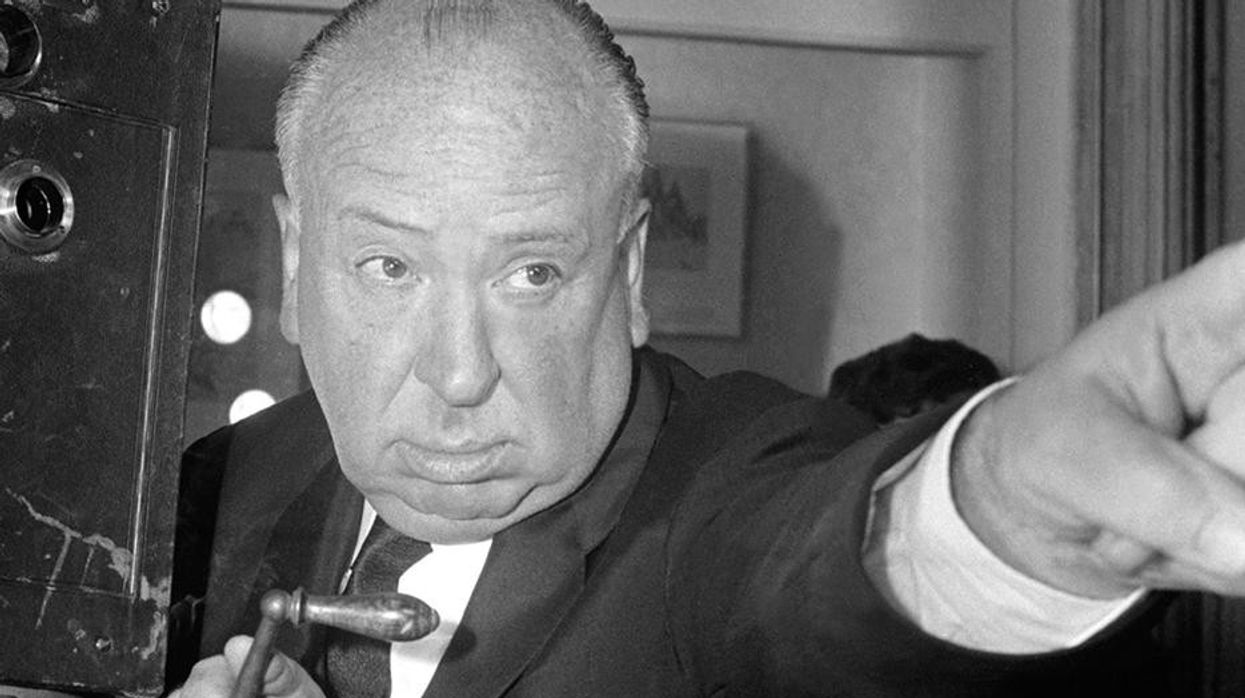3 Lessons from Alfred Hitchcock That Can Help You Write a Suspenseful Scene
It's all about the information given or withheld from the audience that can build anticipation.

Suspense thrillers are some of the most entertaining films to watch. The anxiety-inducing genre can keep an audience on the edge of its seat as the main character slowly descends into isolation and paranoia grows.
No other filmmaker was as masterful at crafting suspense as the late Alfred Hitchcock, who often employed a kind of psychological suspense for the audience in each of his films.
When it comes to creating suspense, Hitchcock has three lessons that can help you focus on what information is important for a scene to create a level of desired suspense from your audience. By understanding how to create suspense, you’ll be able to write a great thriller that Hitchcock would approve of.
Know the difference between mystery and suspense
Although there are similar elements to mystery and suspense, their purposes are completely different.
Mysteries are an intellectual process, and the story holds back information from the audience. You’re posing the question, “Who did it?” and withholding that information from the audience to keep their attention until the end.
The problem is that there is no emotional engagement with the audience.
Suspense is essentially an emotional process or the anticipation of action. Giving the audience-specific information will build an emotional response, allowing the audience to wait with anticipation for the tension of a scene to snap.
The “bomb under the table” analogy
Hitchcock believed that a simple scene about four people sitting around a table, talking about anything until a bomb went off unexpectedly creates ten seconds of shock. What if that same scene took place but the people around the table knew that there was a bomb under the table the entire time?
The emotional response of the audience will be different because you’ve given them a little bit more information about the scene.
When the audience knows something that the characters don’t know, that otherwise mundane sequence of dialogue becomes much more enthralling because the audience knows what is going to happen.
Suspense forces the audience to engage with the story. The audience wants the people at the table to stop talking about their meaningless topic of conversation and see that there is a bomb about to blow them to smithereens.
If you want to be particularly cruel to your audience, then that bomb under the table shouldn’t go off. You’ve suspended the audience in suspense and they are waiting for the explosion, but nothing happens. This will send the audience into a frenzy because they were denied proper relief.
It doesn’t matter if the bomb goes off or not, but you’ve given the audience the information needed to keep them on the edge of their seats. Just because they’ve pieced a story together with the information presented doesn’t mean that you have to follow the story.
Let the audience’s imagination create the shock and horror
The human imagination is a funny little thing. It can take information, and create something far more terrifying than what is happening on screen. This is why so many movie monsters are hidden in the shadows until the end of the film. Keeping the creature out of frame builds a specific type of fear that is unattainable if the creature is shown.
Certain elements in storytelling can transfer into the mind of the audience, forcing them to participate in the film. Many films treat the audience as a spectator, but doing this will eliminate any chance of suspensefully engaging with the audience.
Be subtle and picky about what the audience does and doesn’t see in the frame, and let their minds do the work for you.
These three lessons in suspense from Hitchcock will help you hone your ability to create genuine suspense in your screenplay. Don’t be afraid to play with audience expectations when you deliver specific information in a scene, but make sure that the information being presented has weight in the overall story.
Source: American Film Institute











